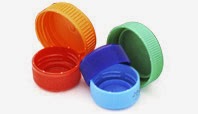Weather it is for packaging, storing or in the form of mold castings, PET plastic has been truly revolutionary in revising the entrepreneurship of Plastic mold manufacturers in India. Polyethylene Terephthalate (PET) is a staple packaging material. Employed by a consortium of manufacturing industries, PET has ventured into diverse segments of production.
The reason behind its wide popularity is undoubtedly its cost-effective and environment friendly attribute. As per a recent survey conducted by Life Cycle Analysis (LCA) of Allied Development Corporation revealed how environmental footprint and greenhouse gas emissions while manufacturing PET relates to alternative forms of packaging. The study affirmed that PET containers are better performers than aluminum can and glass.
Know what your Plastic can do?
Have you gazed at the various symbols etched on your plastic products? Every product is labeled with a recycling code. Digits ranging from 1 to 7 on the container help recyclers classify the product as per the different kinds of plastic available in the market. The Society of the Plastic Industry, SPI create a code to indicate what kind of plastic can be recycled. The various types of recyclable plastics and their uses after recycling are highlighted below:
1. Polyethylene terephalate (PET)
Uses - New soft drink bottles, Polyester clothing, Sleeping bag insulation and Carpeting
2. High density polyethylene (HDPE)
Uses - Bottles, Grocery Bags, Bins, Plastic lumber, etc.
3. Low density polyethylene (LDPE)
Uses - Plastic bags, Containers, Bottles and Tubing
4. Polystyrene (PS)
Uses - Cafeteria trays, Toys, Video cassettes and cases and Insulation board
PET bottles are made with the help of pet plastic injection mould and injection molding machines. Given to the sustainability and efficacy of Polyethylene Terephthalate bottles, there demand in different industrial packaging solutions has been gigantic. So, it is quite evident that demand for these bottles in the market has also taken the path up the ladder.



